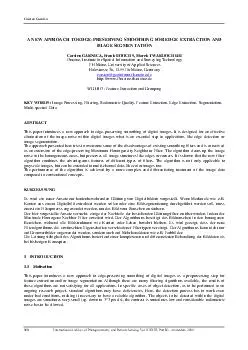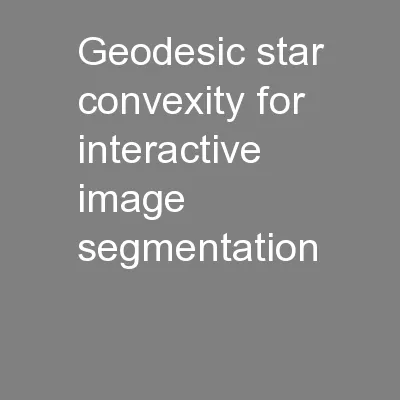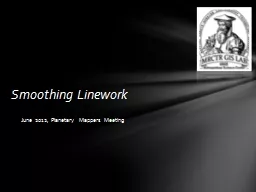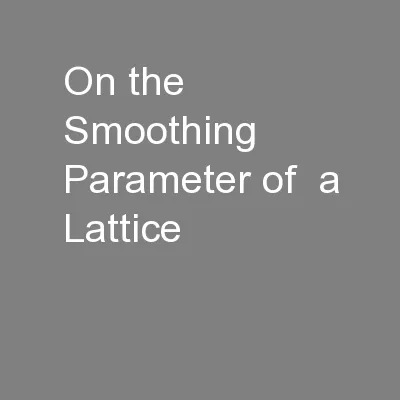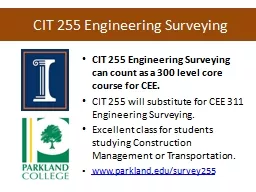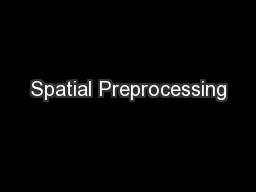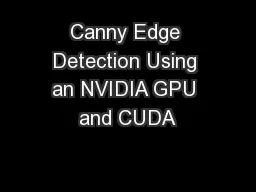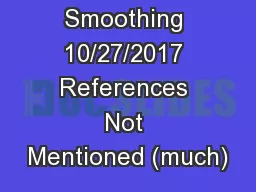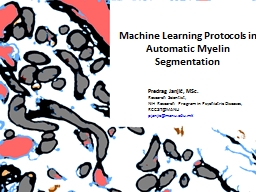PDF-A NEW APPROACH TO EDGEPRESERVING SMOOTHING FOR EDGE EXTRACTION AND IMAGE SEGMENTATION
Author : alexa-scheidler | Published Date : 2015-01-15
fhmainzde httpwwwi3mainzfhmainzde WG III3 Feature Extraction and Grouping KEY WORDS Image Processing Filtering Radiometric Quality Feature Extraction Edge Extraction
Presentation Embed Code
Download Presentation
Download Presentation The PPT/PDF document "A NEW APPROACH TO EDGEPRESERVING SMOOTHI..." is the property of its rightful owner. Permission is granted to download and print the materials on this website for personal, non-commercial use only, and to display it on your personal computer provided you do not modify the materials and that you retain all copyright notices contained in the materials. By downloading content from our website, you accept the terms of this agreement.
A NEW APPROACH TO EDGEPRESERVING SMOOTHING FOR EDGE EXTRACTION AND IMAGE SEGMENTATION: Transcript
Download Rules Of Document
"A NEW APPROACH TO EDGEPRESERVING SMOOTHING FOR EDGE EXTRACTION AND IMAGE SEGMENTATION"The content belongs to its owner. You may download and print it for personal use, without modification, and keep all copyright notices. By downloading, you agree to these terms.
Related Documents

